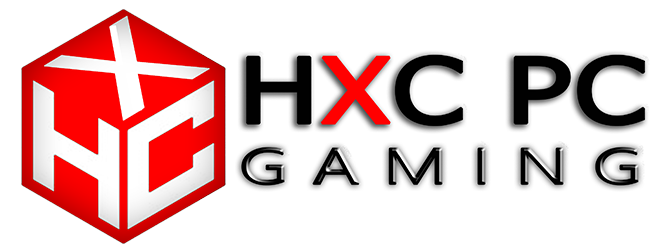FBC: Firebreak
June 17th, 2025
Platform
PC (Steam, Epic Games Store), PlayStation 5, Xbox Series X|S
Publisher
Remedy Entertainment
Developer
Remedy Entertainment
Remedy Entertainment is a development studio that doesn’t need any introduction. The Finnish developer has been around for a very long time, and in the long years of activity, it has released some incredible games that have etched themselves in the minds of those who experienced them, like the first two entries in the Max Payne series, the two entries in the Alan Wake series and Control, the game which effectively kickstarted the Remedy Connected Universe that connects the latter two series, and who knows what else in the future.
Following the release of the incredible Alan Wake 2, everyone expected the next game they would see and play from Remedy Entertainment would be another experience with a narrative focus, and not a gameplay-first title like FBC: Firebreak. Gunplay, after all, is far from being Alan Wake 2’s best feature, and although Control did feature satisfying combat, no one would say its gunplay was so good as to warrant a game entirely focused on it. Although I still cannot say for certain if Remedy’s very first multiplayer game is worth of your time and money, at the vert least, however, I can say that FBC: Firebreak is a competent co-op first-person shooter that uses its setting in the best possible way to offer an experience with ton of personality that has stayed enjoyable for more than a dozen hours already.
Though a markedly different game from all those that are currently part of the Remedy Connected Universe, FBC: Firebreak is deeply rooted in it, and serves a sort of continuation to the events of Control. Set six years after Jesse Faden’s journey into the Oldest House, the Federal Bureau of Control’s headquarters is under siege by the Hiss and is effectively isolated from the rest of the world. In the attempt to regain control of the building, an emergency response unit has been put together to save trapped agents, fight the Hiss, and restore order. The game’s narrative doesn’t move a lot past the premise, which was expected considering the genre, but it still has something to offer in this regard, as clues on what happened after Control are offered via pre-mission and in-mission dialogues and environmental storytelling. With plenty of easter eggs to discover, fans of the Remedy Connected Universe will find plenty to like in the game, even if they are not into the co-op experience the game delivers.
Without a major focus on narrative, the entire FBC: Firebreak experience is built around its gameplay. At its heart, the game is a three-player co-op first-person shooter like the Left 4 Dead series, Back 4 Blood, and Deep Rock Galactic, but with some unique Remedy Entertainment spin. Instead of traditional classes, the game features three different Crisis Kits centered around core abilities represented by tools, which define what each kit is good at. The Fix Kit is an impact-focused kit which includes a Wrench that can be used to get physical with Hiss but also to repair devices quickly; the Jump Kit is an electricity-focused kit best suited for those who want to control the field and have excellent positioning; the Splash Kit is a water-focused kit coming with a Crank-Operated Fluidic Ejector which can put out fires but that also works great causing altereted conditions to enemies, which is one of the most important mechanics in the game. At the beginning of the game, all three kits come only their basic tools and a single Perk slot, but by completing Jobs and earning Lost Assets, it is possible to unlock additional combat options, which include their “Ultimates” Altered Augments which can really turn the tide with some of wackiest weapons seen this side of the FPS genre. In addition to the tools unique to each kit, Firebreakers can also equip all available weapons, which are unlocked and upgraded via the Requisitions feature using the aforementioned Lost Assets, the game’s main currency, and grenades. Perks, which are progressively unlocked after reaching certain ranks and must be purchased using Lost Assets via the Research feature, are also not limited to certain Crisis Kits, so there’s plenty of loadout freedom once multiple options have been unlocked.

With the Firebreakers’ Crisis Kits having some rather unusual specialized abilities, mission and level design obviously had to take them into account. In this regard, FBC: Firebreak definitely delivers, offering the weirdest selection of missions seen in the genre. Together with relatively standard jobs like fixing fans in Hot Stuff and loading up Black Rock in Ground Control, the game tasks players with destroying sticky notes in Paper Chase, clearing pink Exogenic Mass from important devices in Frequency Shift, and getting rid of frost anomalies using portable heaters in Freezer Duty. This, on paper, sounds simple enough, but the game likes to throw so many wrenches that no match ends up being the same. Not only is the position of targets randomized within a set number of possibilities, but Firebreakers also have to contend with Hiss and all the dangers inside the Oldest House, dangers that can cause altered conditions that can only be removed by taking a shower, which also serves as the only way to restore health. Enemies are also affected by these conditions, and how they interact with one another makes the experience deeper and more fun. If you have any way to unleash electricity-based attacks, you should always consider applying a wet condition as well for maximum effect. Setting the Hiss on fire can help you damage them considerably over time, but it also makes them stronger and more aggressive, so alternating between setting them on fire and extinguishing the flames is a smart way to go. With all of these elements to consider, things tend to get hectic quickly, but thankfully, the game features plenty of options to tweak the difficulty, such as Threat level options, so even those who never played a co-op FPS before will be able to have fun from the get-go while learning the ropes.
Being very easy to get into is definitely one of the things FBC: Firebreak does best. During your very first jobs, you may have some trouble understanding what’s going on, but it doesn’t take long to understand the basic gameflow, what to prioritize, like opening up shelters to restock, gain extra Lost Assets and open up a respwan point and fix broken showers and ammo stations, and what to leave for later. Soon enough, you will be caught in the game’s frantic pace, learn the maps better, devise better ways to clear jobs, and make it back to the elevator in time. Don’t think, however, that returning home is as simple as just waiting for the elevator to reach the current level, as you will often also have to defeat powerful named enemies first. All of this sounds chaotic, and it indeed is, to a certain degree, but there’s a method to this madness, which becomes clearer as you spend more time in the Oldest House.

Adding more depth to the FBC: Firebreak is the solid and extremely varied map design, which takes full advantage of the setting to often provide the unexpected, and the three levels of clearance for each job, which introduce two more rounds to each job. The second round is basically a more complicated and challenging variant of the first, while the third introduces a brand new objective that requires a completely different approach. In the Hot Fix job, for example, the first two clearance levels involve repairing fans, while the third requires players to seal the Furnace again, requiring players to first turn the heat down to approach it. As if this weren’t enough, level 3 clearance also introduces the Corruption modifier, which introduces Corrupted Items into the mix, everyday items possessed by the Hiss that significantly alter the combat dynamics of the job. This adds yet another layer of unpredictability to the experience, helping missions feel fresh even after multiple runs in a very personable way that is deeply rooted in the universe the game belongs to. As such, leveling up Crisis Kits, increasing Rank and obtaining Lost Assets to unlock new weapons and upgrades as well as the cosmetic options that would usually be included in timed battle passes never feels like a chore, although attempting to grind solo will eventually become boring, as rewards are tuned down for solo play, and the experience is, frankly, not very fun without other players. Some of the mechanics also make it clear how the game is meant to be played with other players, such as the shield mechanics, and the interplay between the three Crisis Kits and how all three of them can make every job more manageable.
Although FBC: Firebreak has stayed fun for the time I have spent with the game so far, there’s no denying that the experience does have some minor flaws. Gunplay, for example, doesn’t feel very satisfying, and I would have expected some to see something a little more inspired regarding firearms, which are extremely straightforward compared to some of the other tools available to Firebreakers. Enemy variety is decent, but it’s not exactly big, as the developer went with a limited number of enemy types and worked from there to create some slight variants. Considering that combat is not the focus of the vast majority of Jobs available at launch, this makes sense somewhat, but low common enemy variety could be an issue down the line. The lack of in-game voice chat could also be an issue for some, but the game features a basic pinging system that works decently enough, and each platform has plenty of options for voice chat, so I expect the lack of in-game support to not be a massive problem for most players.
Powered by the Northlight Engine, FBC: Firebreak delivers some pretty good visuals using a slightly more colorful variant of the art direction seen in Control. The detailed rendering of these parts of the Oldest House is enhanced by great use of lighting, which can be further enhanced by enabling ray tracing. For a fast-paced game like this, however, having the highest FPS possible is extremely important, so I expect most players to turn down the most demanding graphics settings and disable ray tracing to have the best possible performance. At the settings in the screenshots below, without the 120 FPS cap, the game ran at an average of 168 FPS, 45 1% low, at 4K resolution with NVIDIA DLSS in Quality mode in a quick Clearance Level 1 run of the Hot Fix job on my system (i7-13700F CPU, RTX 4080 GPU, 32 GB RAM), with no impactful stuttering or performance drop, so if the servers hold up for the influx of players at launch, most players with a relatively modern system should be able to enjoy the game without any trouble.
Although I’m not yet ready to deliver a definitive verdict on FBC: Firebreak, my current impressions are definitely positive. Despite being Remedy’s first foray into multiplayer, the Finnish studio crafted a fun co-op shooter with a lot of personality, thriving on the unpredictability offered by the Remedy Connected Universe that makes it easy to look past some of its issues, such as the unsatisfying gunplay. With a promising content roadmap, FBC: Firebreak has a bright future ahead, and it’ll be interesting to see whether it will manage to stay as fresh as it does in the first dozen of hours or so.
PC version tested. Review code provided by the publisher.

